Bitumen and heavy oil deposits occur in 95 countries across the world (Meyer et al., 2007) and make up about 70% of total world oil resources. The International Energy Agency (IEA) estimates that the total world oil resources are between 9 and 13 trillion barrels, of which just 30% is conventional crude oil. The remaining 70% of unconventional crude is divided 30% oil sands and bitumen, 25% extra-heavy oil, and 15% heavy oil. The global in-place resources of bitumen and heavy oil are estimated to range from 6 to 9 trillion barrels. Globally there are just over one trillion barrels of technically recoverable unconventional oils. These bitumen and heavy oil reserves are expected to become increasingly important as conventional oil reserves decline.
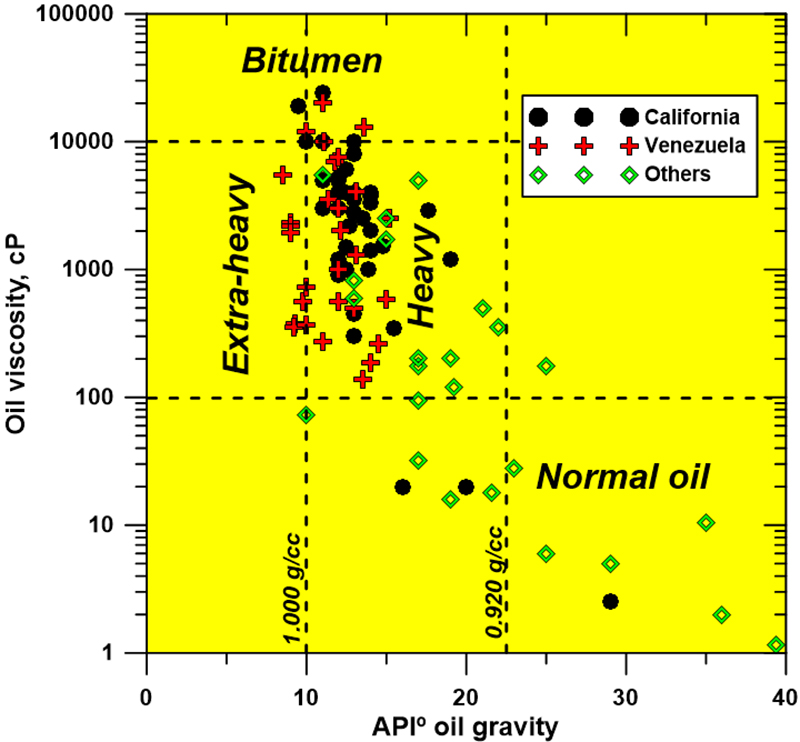
Figure 1: Cross-plot of oil density versus viscosity indicating the fields represented by bitumen, heavy and extra-heavy oils. Actual properties are plotted for a variety of oils from producing oil sand accumulations (data from Oil & Gas Journal, April 2, 2012).
As shown in Figure 1, heavy oil is just slightly less dense than water, with specific gravity in the 1.000 to 0.920 g/cc range, equivalent to API gravity of 10° to 22.3°. Bitumen and extra-heavy oil are denser than water, with an API gravity less than 10°. Extra-heavy oil is generally mobile in the reservoir, whereas bitumen is not. At ambient reservoir conditions, heavy and extra-heavy oils have viscosities greater than 100 centipoise (cP), the consistency of maple syrup. Bitumen has a gas-free viscosity greater than 10,000 cP, similar to molasses. Oil sands (also called tar sands), but which more accurately are bituminous sands, consist of bitumen (derived from degradation of oil) either as seeps that come to surface or accumulated within shallow subsurface sediments.
Meyer et al. (2007) found that heavy oils are found in 192 sedimentary basins and bitumen accumulations occur in 89 basins. These bitumen and heavy oil deposits are not uniformly distributed, with more than 70% of these resources found in Canada, Venezuela and the United States. Other areas with important combined bitumen and heavy-oil deposits include the Middle East, China, Africa, Russia, Kazakhstan, Cuba, Trinidad and Tobago, Mexico, Colombia, Italy, and Malta. Within the United States, bitumen and heavy oil deposits mainly occur in California, Alaska, Utah, southwest Texas, Louisiana, Alabama, Montana, and Wyoming with scattered deposits in other states.
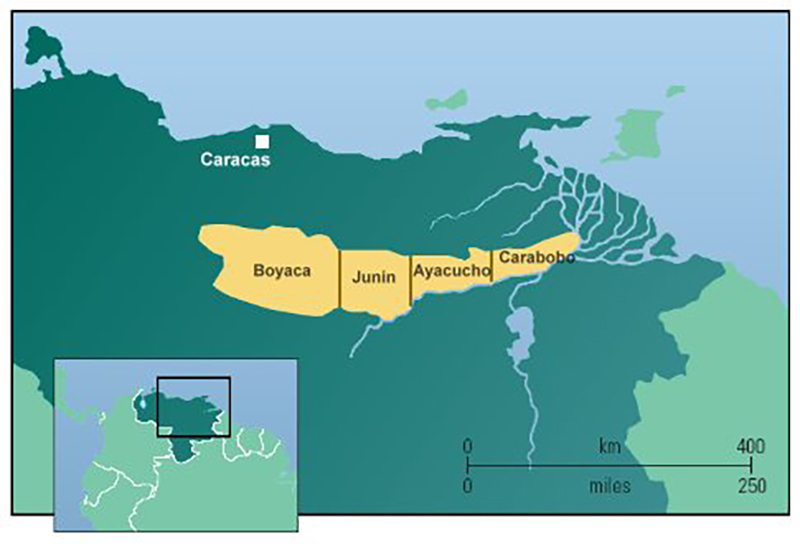
Figure 2. Location of the Orinoco Heavy Oil Belt in eastern Venezuela. The belt is divided up into four regions (Rigzone, 2020).
The extensive Orinoco Heavy Oil Belt (Faja Petrolifera del Orinoco) of eastern Venezuela (Figure 2) is the largest extra-heavy oil deposit in the world, containing 1.2 trillion barrels (190 billion m³) of extra-heavy oil-in-place of which 310 billion barrels (49.3 billion m³) is considered technically recoverable. The deposit is 55,314 km² in size and extends 600 km in an east-west arcuate band that is up to 90 km wide.
Heavy oil constitutes approximately 18% of the total Russian oil reserves and is estimated at 22.6 billion barrels (3.6 billion m³). Recoverable heavy oil occurs in four principal petroleum provinces, (1) the southern, up-dip portion of the West Siberian Basin, (2) the Volga-Ural Basin, (3) Timan-Pechora Basin, and (4) Eastern Siberian Basin (Figure 3).
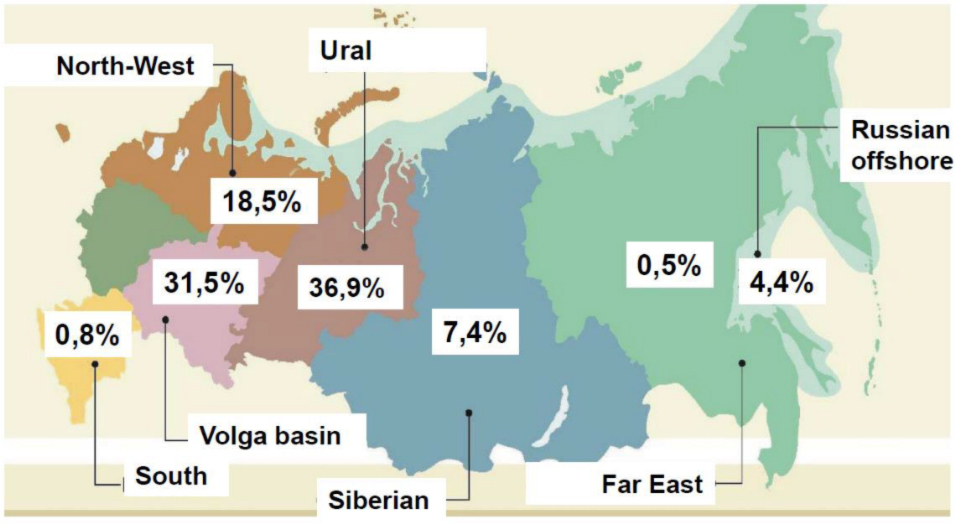
Figure 3: Regional distribution of Russia’s heavy oil and bitumen reserves (VNIGRI, 2017).
California has the third largest exploited heavy oil reserves in the world after Venezuela and Russia. As of the end of 2017, California’s proved reserves were 2,204 million barrels (350.4 million m³). Fifty-two of the fields each have reserves greater than 100 million barrels (15.9 million m³). California’s oil fields are in the central and southern parts of the state (Figure 4). Per volume of sedimentary fill, the Los Angeles Basin may be the world’s most petroliferous province.
The largest oil sand deposits in the world are along the shallow up-dip margins of the Western Canada Sedimentary Basin (Figure 5). These deposits consist of several separate accumulations of bitumen and heavy oil that together comprise 1.8 trillion barrels (289 billion m³) of in-place resource.
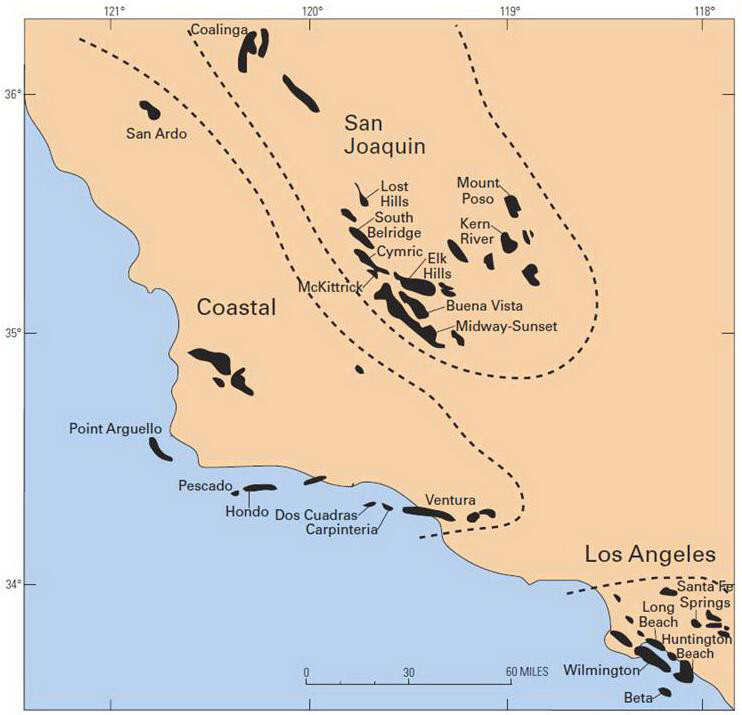
Figure 4: Principal oil fields of California (Tennyson, 2005)
About 20% of the oil sands reserves in the Athabasca Oil Sands north of Fort McMurray, Alberta are recoverable by surface mining where the overburden is less than 75 m. Here the shallow oil sands are recovered in open-pit mines by large scale truck-and-shovel operations where the oil sand is transported to processing plants, where hot or warm water separates the bitumen from the sand, followed by dilution with lighter hydrocarbons and upgrading to synthetic crude oil (SCO). For the remaining 80% of the oil sands that are buried at a depth of greater than 75 m in-situ technologies (largely thermal techniques such as Steam Assisted Gravity Drainage [SAGD], Cyclic Steam Stimulation [CSS], or Hybrid Steam Assisted Gravity Drainage [HSAGD]) are used to extract the bitumen. In North America, all of the bitumen production is from Alberta. The proportion of production from mine operations has been steadily rising and in 2019 Alberta in-situ and mining bitumen production were roughly equal, averaging a total of 3.1 million barrels/day (497.4 thousand m³/day).
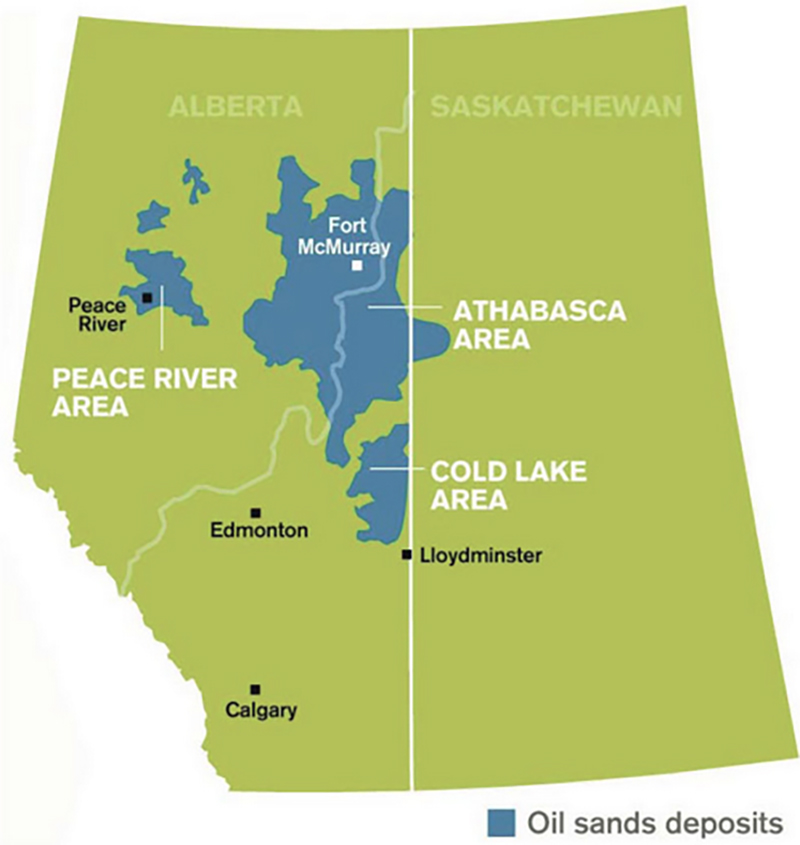
Figure 5. Distribution of oil sands deposits in Alberta and Saskatchewan (Pacey, 2013).
Because of the expected growth in oil sands production, a large number of specialists will be needed including subsurface and mine geologists (depending upon whether it is in-situ or surface mining), geophysicists, reservoir engineers, computer modellers, environmental and reclamation specialists, policy specialists, and economists.
The goals of this committee are to monitor research, technological and environmental advances, and development and exploration activities related to bitumen and heavy oil in countries and regions of the world where this commodity is central to the energy economy. Also to focus on events and economic drivers that substantially impact the production, transportation, and marketing of this resource.
If you are interested in learning more about bitumen and heavy oil, or on activities of the EMD Bitumen and Heavy Oil Committee, see the Committee’s last Annual Report (May 2019) on the Activities and Reports section of this website. Additional information including a compilation of references and website links, and links to articles of interest can be found in the Resources and Links section of this website.
For further information on this committee’s activities, contact: